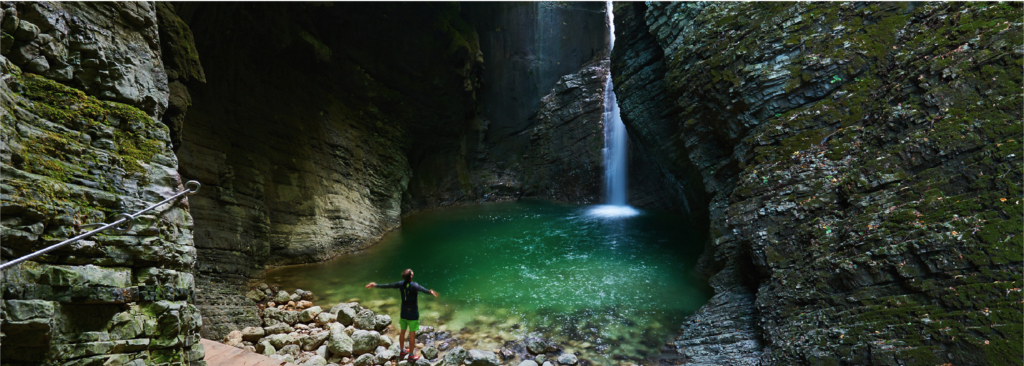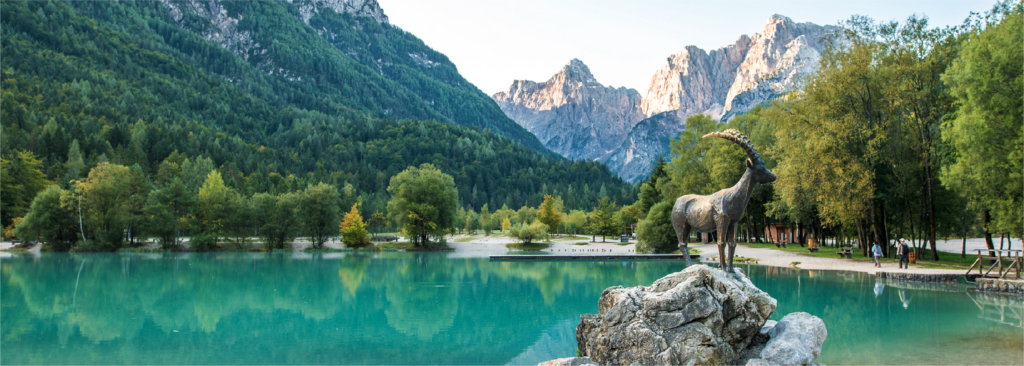Facts about Slovenia
COP 23 · Portorož · Slovenia · Hotel Bernardin
5. – 8. December 2023

- Small country, surface area of just more than 20.000 sq km and 2 milion people, coastline of only 46 km – good things come in small packages
- 30 years ago Slovenia became a full member of the UN (May 1992)
- Slovenia is the most passionate beekeeping country in the EU (it has almost five beekeepers per 1,000 people).
- Slovenia is one of the most environmentally-friendly countries in the world. According to the Good Country Index, it ranks fourth among 153 countries in terms of its positive contribution to the planet and the climate.
- Capital city Ljubljana is a proud holder of the title 2016 European Green Capital and has just been recognised as a Tree City of the World. It is also the first European capital to commit to going zero-waste.
- Many sights on the UNESCO World Heritage Natural heritage: Škocjan Caves, Ancient and Primeval Beech Forests of the Carpathians and other regions of Europe – Krokar and Snežnik-Ždrocle; Cultural heritage: Heritage of Mercury – Idrija, Prehistoric Pile Dwellings around the Alps – Ljubljana Moors, The works of Jože Plečnik in Ljubljana – Human Centred Urban Design, Intangible Heritage of Humanity: Škofja Loka Passion Play, Bobbin lacemaking in Slovenia, The door-to-door rounds of Kurenti, Dry-stone walling
- Ban on the sale for the single use plastic – The “LESS plastic, MORE sustainability” commitment to eliminate single-use plastic has been signed by more than 100 stakeholders also in Slovenian tourism: hotel operators, health resorts and providers of other types of accommodation, restaurants, inns, destination organisations, glamping resorts, travel agencies, tourist attractions, event organisers, etc.
- the highest peak is Mt Triglav (2684 m), more than 352 mountains higher than 2000m
- there are more than 10.000 km of marked hiking trails in Slovenia, with 175 mountain huts
On biodiversity

- Protected areas and/or Natura 2000 sites cover 41.4% of Slovenian territory. National, regional and landscape parks and nature reserves and natural monuments (protected areas) cover 15.4% of the territory and Natura 2000 sites cover 37.5% (in some places they overlap, as many nature parks are at least in part Natura 2000 sites);
- Natura 2000 sites encompasses 26 sites for bird conservation and 260 sites for the conservation of habitat types and species.
- Almost 6% of inhabitants of Slovenia or around 128,000 people live in Natura 2000 areas; 70% of Natura 2000 areas is forest and a bit more than 20% is agricultural land;
- 60% of its territory is covered with forests, making it the third-most-forested country in Europe, and one of the greenest in the world.
- With more than 24.000 animal and plant species is one of the most biodiverse countries in the world; the absolute champion in Europe in terms of the number of species per square kilometre of territory;
- Slovenia is home to one of the largest brown bear populations in Europe, more than a 1000;
- Slovenia is home to the olm, proteus (Proteus anguinus), human fish or baby dragon… a small and very sensitive creature with many names is the only vertebrate in Europe that is exclusively found underground.
- You can see the baby dragons in the famous Postojna Cave, together with the most precious and magnificent cave formations.
- In Slovenia there is more than 13.000 caves, only 20 are open to visitors.
On water

- Water is one of key natural resources in Slovenia. Drinking water is provided via public water supply network. It is also important for electricity production as approximately 25% of electricity is produced in hydropower plants.
- Slovenia is a country defined by water, with more than 60 rivers and streams, 300 artificial and natural lakes, and 7.500 freshwater springs.
- Slovenia is one of the most water-rich in Europe and we have a potable water of excellent quality. Drinking tap water that is generally accessible in Slovenia is a privilege we enjoy.
- Right to safe and clean drinking water is very important to Slovenians and therefore the right to water is included in the Slovenian Constitution since 2016.
- Recognition of right to water in constitution is an important step in ensuring that future generations will also be able to enjoy in this luxury. It also shows awareness that water will become an important strategic national asset in the future that needs protection on the highest level.
Tourism

- Slovenia was declared the first Green Country in the World at the Global Green Destinations Day in 2016.
- Slovenia was named 5th in the top 10 countries to visit in 2022, according to world-leading travel publisher Lonely Planet.
- Slovenia has been named one of the 12 most sustainable destinations for 2022 by Conde Nast Traveller magazine.
- Tourism in numbers (2021): more than 4 million tourist arrivals (foreign more than 1,8 million; domestic more than 2,1 million), more than 11 million overnight stays (more than 4,7 million foreign, more than 6,4 million domestic), 5,3 % total contribution of tourism to GDP, inflow related to travel 1,5 billion EUR
- Tourist arrivals by country (2021): Germany (22,6%), Austria (9,3%), Italy (8,8%), Czech Republic (6,6%), Netherlands (5,8%), Hungary (5,6%), France (4,7%), Poland (4,5%), Belgium (4%), Croatia (3,4%), Serbia (2,4%), USA (2,1%), Slovakia (2%), Bosnia and Hercegovina (1,9%), Switzerland (1,9%), Spain (1,5%), Romania (1,4%), UK (1,1%)
- The Green Scheme of Slovenian Tourism is a tool and a certification programme developed at the national level that brings together all efforts directed towards the sustainable development of tourism in Slovenia, offers tools to destinations and service providers that enable them to evaluate and improve their sustainability endeavours, promotes these endeavours through the SLOVENIA GREEN brand
- Slovenia is the only country in the world, that has a name “love” in its name 🙂
